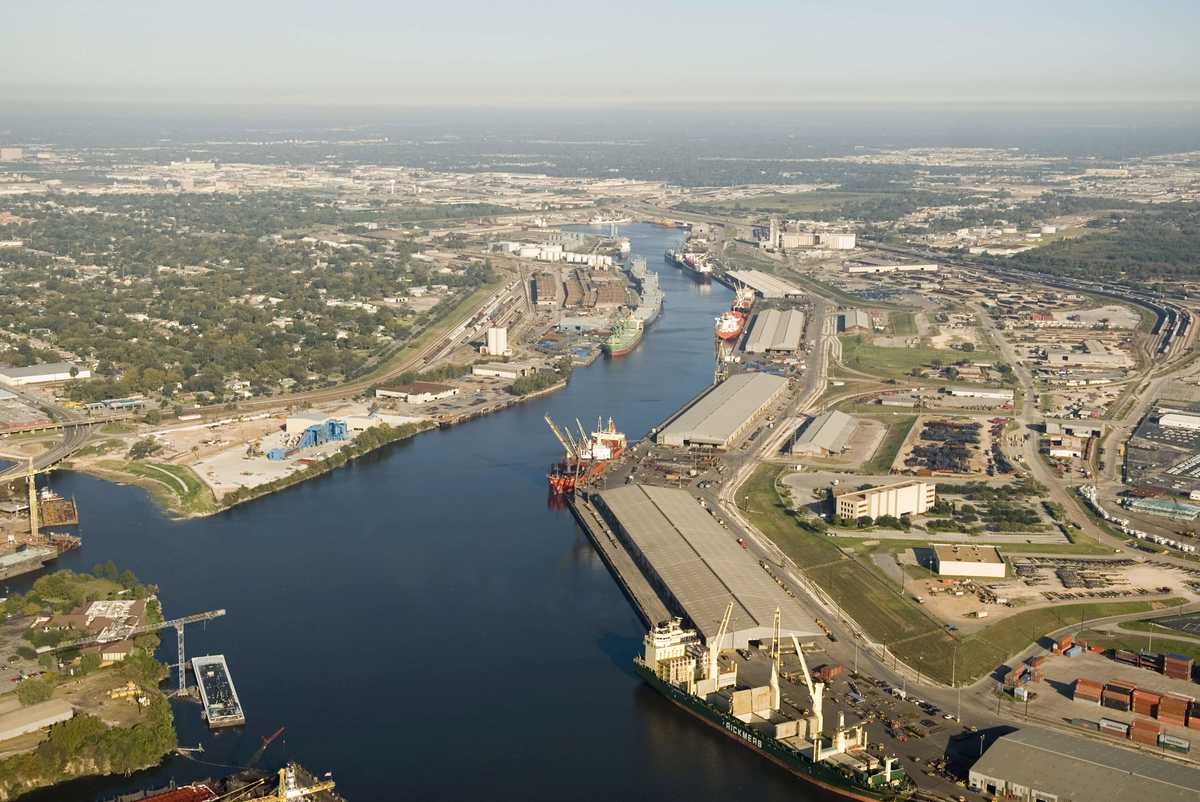The Week in Alternative Fuels 6 October 2023
Fossil fuel consumption needs to be reined in through mass uptake of net zero-compatible fuels towards the middle of the century and this week saw developments for ammonia and nuclear power.
 PHOTO: Aerial view of Houston Ship Channel. Port of Houston
PHOTO: Aerial view of Houston Ship Channel. Port of Houston
Net zero emissions is still achievable by 2050 if global fossil fuel consumption is reduced, the International Energy Agency (IEA) wrote in its updated net-zero strategy. The energy watchdog went on to say that efforts to promote clean energy will require at least a two-fold increase in investments over the next decade, from $1.8 trillion in 2023 to $4.5 trillion at the end of the decade.
It is possible to reduce our fossil fuel dependence through greater adoption of alternative fuels like ammonia and alternative power sources like nuclear energy.
Energy intelligence firm Rystad Energy projects globally traded volumes of ammonia to reach 76 million mt/year by 2035, and then surge to 121 million mt/year by 2050. It estimates that 200 very large ammonia carriers (VLACs) will be needed by 2050 to transport growing exports, requiring at least $20 billion in investments. This cost burden could be reduced by retrofitting existing liquefied petroleum gas (LPG) carriers to handle ammonia.
Rystad Energy’s projection was supported by a supply-side announcement this week. A cross-sectoral consortium has set out to build a 1.1 million mt/year blue ammonia plant on the Houston Ship Channel by 2027. The consortium is made up of Japan's INPEX Corporation, French industrial gas supplier Air Liquide, US-based LSB Industries and terminal operator Vopak Moda Houston. Blue ammonia will be exported to Asia and Europe, according to the group.
Some shipping companies are already preparing for the expected rise in ammonia shipping. Mitsui O.S.K. Lines (MOL)-arm MOL Energia recently took delivery of a dual-fuel LPG-powered very large LPG/ammonia carrier from Japan’s Mitsubishi Heavy Industries (MHI). Demand for large-scale ammonia carriers is expected to increase in the future, according to MHI.
Meanwhile, a floating offshore nuclear barge concept designed by South Korean duo HD Korea Shipbuilding & Offshore Engineering (KSOE) and KEPCO Engineering received class approval from the American Bureau of Shipping (ABS). The nuclear barge can supply power to remote areas and enable production of green bunker fuels like ammonia and methanol, KSOE's director of future technology, Kim Sung-Jun said.
By Konica Bhatt
Here is our selection of top five alternative fuels stories from this week:
Net zero by 2050 achievable if the world cuts down fossil fuel demand – IEA
Houston Ship Channel to house large-scale blue ammonia plant
Impending ammonia export boom will create new opportunities to retrofit LPG carriers - Rystad Energy
MHI and Namura Shipbuilding deliver an LPG-fuelled LPG/ammonia carrier
South Korean duo gets ABS nod for floating nuclear power barge concept





